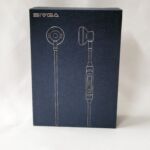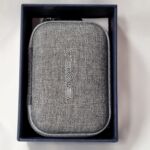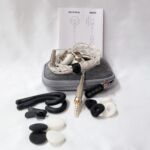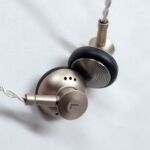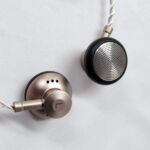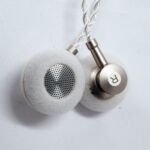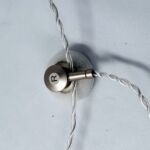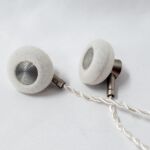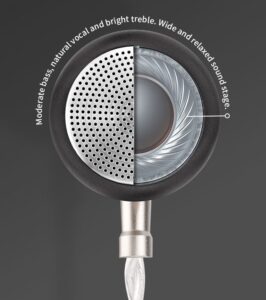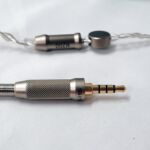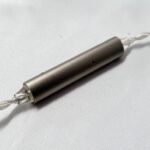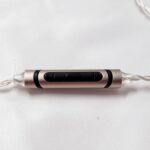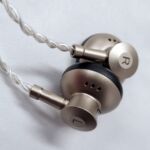Sivga M200
disclaimer: Sivga M200 was sent for purpose of review by Sivga. I have no financial interest in Sivga/Sendy or any of its suppliers or distributors, nor have I received any guidance or payment for this review. If you have an interest in the M200 please visit Sivga’s website, Facebook or Aliexpress page.
Unboxing / Packaging:
Packaging is quite plain with a dark blue background with silver line drawing of the earpieces on front and specifications on the reverse in English and Chinese. Lifting the lid reveals the soft zipper case with everything else but the paperwork hiding inside the case. The kit comes with the earpieces (cable attached), a pair of ear-hooks, two pairs of foams, two pairs of donut foams, the shirt clip, and carrying case. Its a fairly complete kit, especially considering the $49 USD price and all of the accessories are of good quality with the case being well made and well sized to the task of holding the M200.
Build/Fit:
The body of the M200 is all-metal design with a disc shaped bud and a small stick protruding downward as the cable inlet. All components have a brushed chrome finish and are well fitted and polished. The body is rounded with a small barrel at the rear where the cable connects to the drivers and the sides are clearly marked L/R on the center of the barrel for easy indexing. There are 3 vents on either side of the barrel on the rear face of the driver and the grill has concentric rows of tiny ports to limit entrance of debris. Cables are non-removable and covered in more detail below.
Internals:
The Drivers used in the M200 are 15.4mm dynamic drivers utilizing a PET diaphragm and a newly designed coil system for higher magnetic flux. Nominal impedance is listed as 32Ω with a sensitivity of 114dB/mW which puts the M200 into a class that is fairly easy to drive. I had no issues driving M200 with most sources including dongles and low powered sources like the Cayin N3. Because of the non-sealing nature of the M200 it does require a bit more power than a similar in-ear does to reach the same listening volume so despite its high sensitivity you may find a need for higher gain settings or increased volume to reach normal listening levels.
Cable:
The cable fittings look high grade with the 3.5mm jack used being the same brushed chrome finished metal one used on most of Sivga’s full-sized headphones. It has a large knurled surface for gripping, a gold-plated jack, and a spring relief at the cable exit point. The cable is a 4 strand braid in clear casing which shows off the silver plated copper wire. The splitter and chin slider are matching brushed chrome in a barrel and disk layout. Above the splitter, the cable becomes a pair of two wire twists. At the earpieces, the cable is non-removable and passes through a short metal sleeve before reaching the bud. The right hand cable has a 3 button microphone placed roughly half way between the earpiece and the splitter and while susceptible to wind noise, it did work well for calls and conferencing in my testing.
Sound:
All of my listening notes are done without any foams installed. If you use the M200 with the donut foams, except some differences between my notes and your listening experience.
Bass:
As expected sub-bass is a bit light due to the lack of seal so most of the bass that reaches the ear is mid-bass which is boosted enough to give the M200 good slam. The mid-bass has good texture and contributes some warmth to the overall signature but doesn’t sacrifice detail for warmth in the process. Transients are quick and overall there is good clarity in the low-end. Overall the M200 has bass very typical of earbuds, mild sub-bass followed by a more potent mid-bass.
Mids:
Lower mids have good weight and some thickness to them that makes deeper voices lush and organic sounding. That note weight decreases, as it should, as you move through the mids towrad the treble. Guitar has a solid growl at the low end of the range, violins don’t sound artificially thick and have good energy. Upper voices stand a bit forward of the mix and are a bit thinner than their lower counterparts. The mids are the strong suit of the M200 with good textures, ample dynamics, and enough weight to sound natural.
Treble:
The treble sort of pales in comparison to the mids but deserves more attention than it gets. It is well balanced with no big dips or spikes and enough energy to sound natural without sounding strident or harsh. Roll-off is somewhere above 14kHz giving the M200 enough room at the top to have some air and even a little sparkle. Snare rattle is good and cymbals have good tonality without getting tizzy or metallic.
Soundstage / Imaging:
Soundstage is very good with good stage proportion between width and depth and an above average sense of height. We expect good stage from earbuds, and the M200 delivers quite smashingly. The downside to a lot of earbuds is that while they have good stages, they also have problems with imaging. The M200 doesn’t have that problem and does a good job of maintaining the core in-front of the listener as well as parts coming in from the sides or rear as dictated by the source. movements are easily tracked around the large space and positions are well defined including depth or distance.
Comparisons:
vs Yincrow RW-1000
Build Quality – Both are aluminum construction with the Yincrow weighing a bit more and having mmcx connectors allowing for a removable cable. The kit is also a bit more upscale on the Yincrow model but at $82 so is the price point.
Sound – The RW-1000 sounds similar in some regards and quite different in others. The RW 1000 sub-bass is a little lighter than the M200 but the mid-bass is markedly less on the RW-1000. Mids are the star of both shows and both have good treble extension with the RW-1000 being slightly ahead of the M200 in overall treble quality. The M200 is closer to a reference tuning while the RW 1000 is distinctly more mid and treble focused.
vs Smabat ST-10
Build Quality – The ST-10 is a bit higher in build quality with a more solid feel and again uses mmcx connectors and a removable cable. Due to the design of the ST-10 it cannot be worn tip down so like the M200 is only usable in a single orientation.
Sound – Bass extension and quantity is better on the ST-10 while the mids take a bit more of a backseat compared to the M200. The mid-bass has a tendency to over-shadow the lower mids on the ST-10 while the mids are the star of the M200 show. The ST-10 will please bassheads but everyone else may want to grab an M200 first.
vs ToneKing To200
Build Quality – The To200 has a removable cable but otherwise fit and polish are roughly equal. The T0200 can be worn tip-up or tip-down as needed while the M200 is tip down only due to the stem.
Sound – The To200 takes a lot more power to drive adequately but rewards the user with a more natural, more neutral performance. Bass hits lower and harder on the To200 and the top end is a bit livelier provided the amp is up to the challenge. The To200 remains one of my favorite earbuds due to its combination of price and performance but the M200 is a close second place.
Thoughts / Conclusion:
The M200 has a lot going for it and quite frankly was a bit of a surprise. Sivga isn’t exactly known for in-ears to start with, and of those they do make the M200 is the sole earbud. I figured it would have some of the hallmarks of a freshman effort as a result, but I was wrong. Fit and finish are quite good and sonics are on par with models from Yincrow, Simgot, and Toneking all of which are known primarily as earbud manufacturers. That’s saying a good deal. The M200 has a natural tonality, big stage, and great imaging. The inline microphone might be a tipping point for some who want to use their earbuds for phone calls or teleconferencing. The M200 has a reference style signature with good detail but not a lot of extra energy in the lows for genres like EDM and fares better with genres that focus on mid-bass like rock and pop where a kick drum and electric bass guitar are usually the lowest instruments in the mix. The M200 is a solid offering at its price point and should sell well for Sivga. My review sample is likely to remain in my rotation until something better comes along, like maybe an M400.
-
Bass - 7/107/10
-
Mids - 8/108/10
-
Treble - 7/107/10
-
Soundstage - 7/107/10
-
Imaging - 7/107/10
Summary
Pros: good build quality, reference tuning, great mids with good details
Cons: cable not detachable, minimal sub-bass


